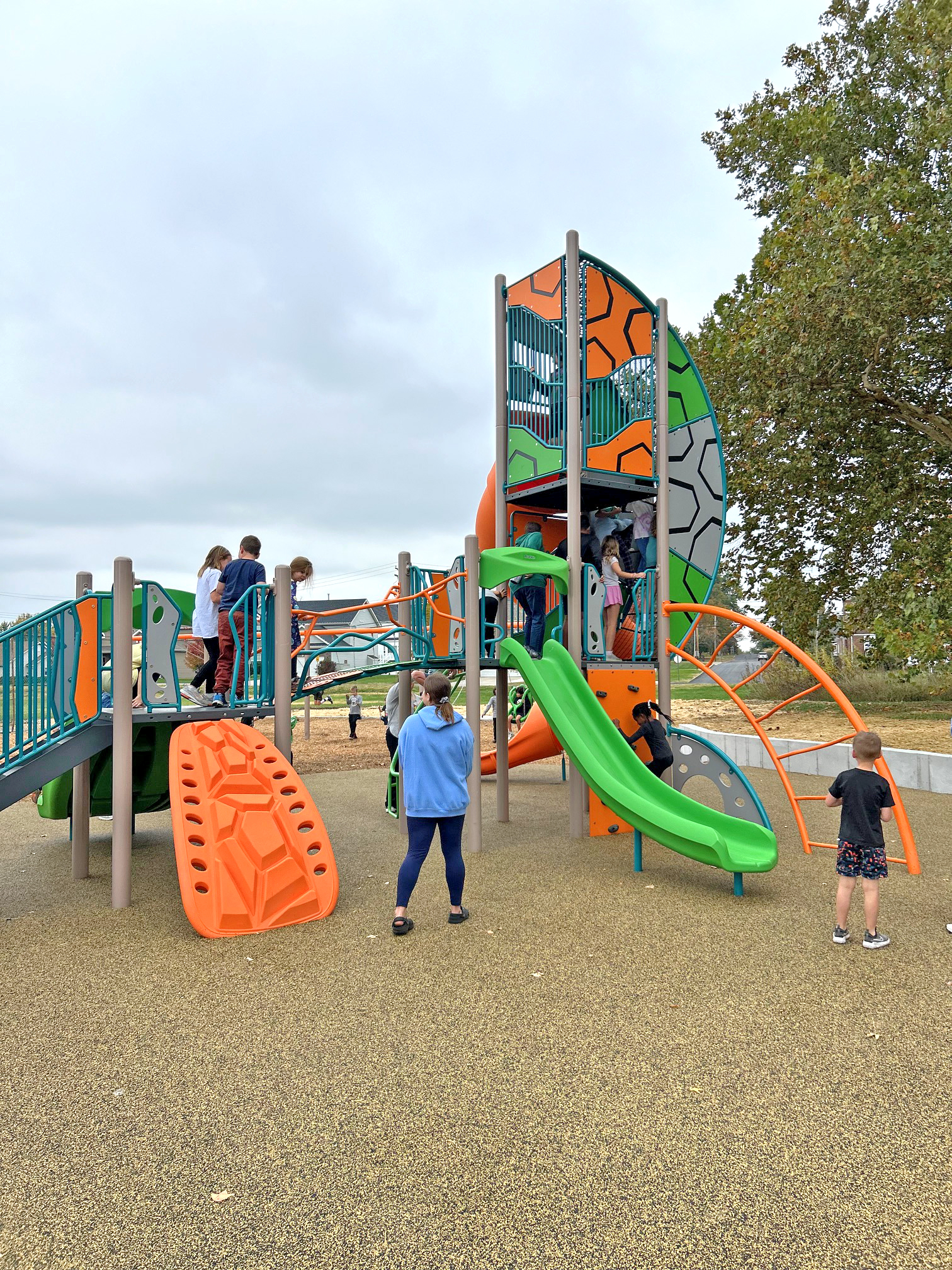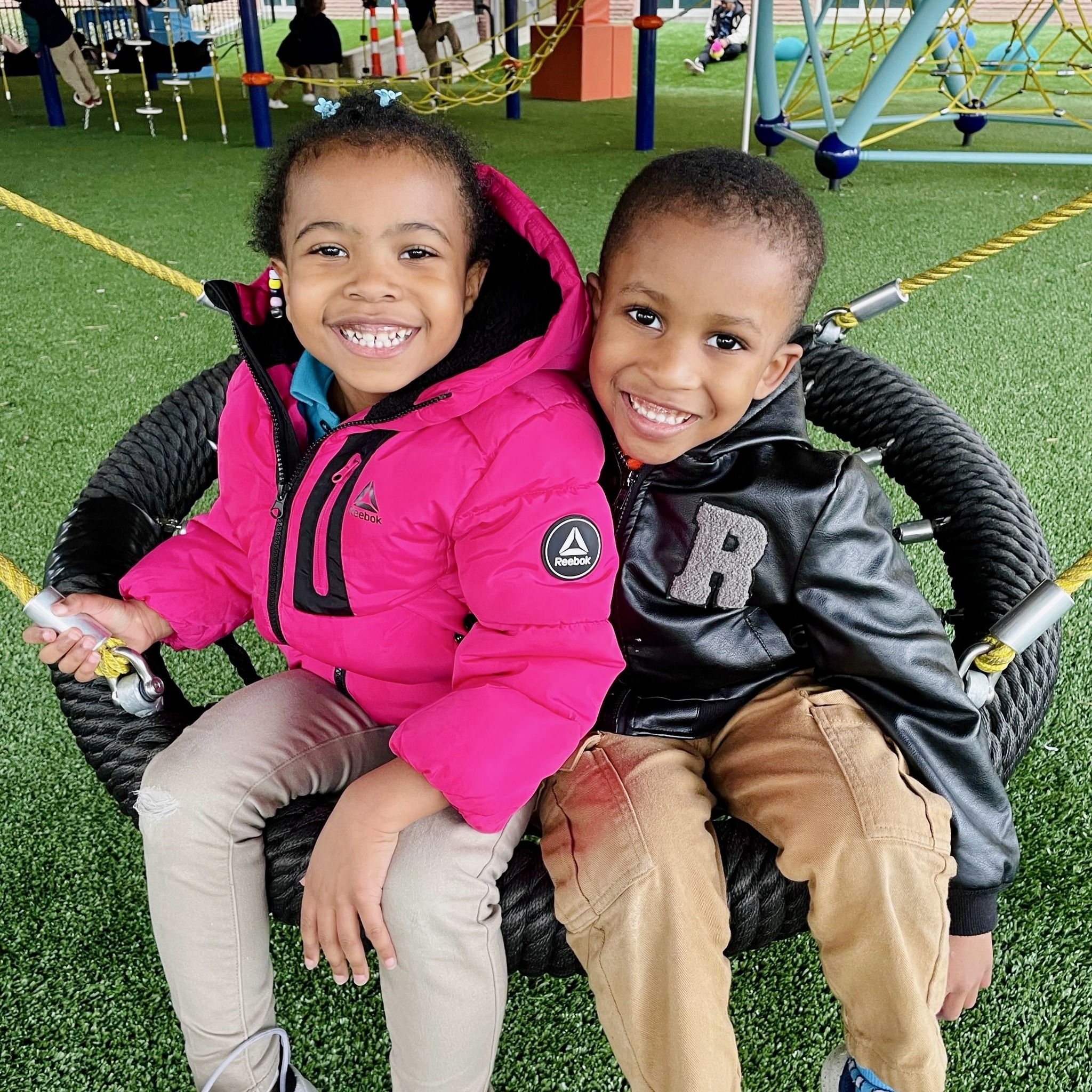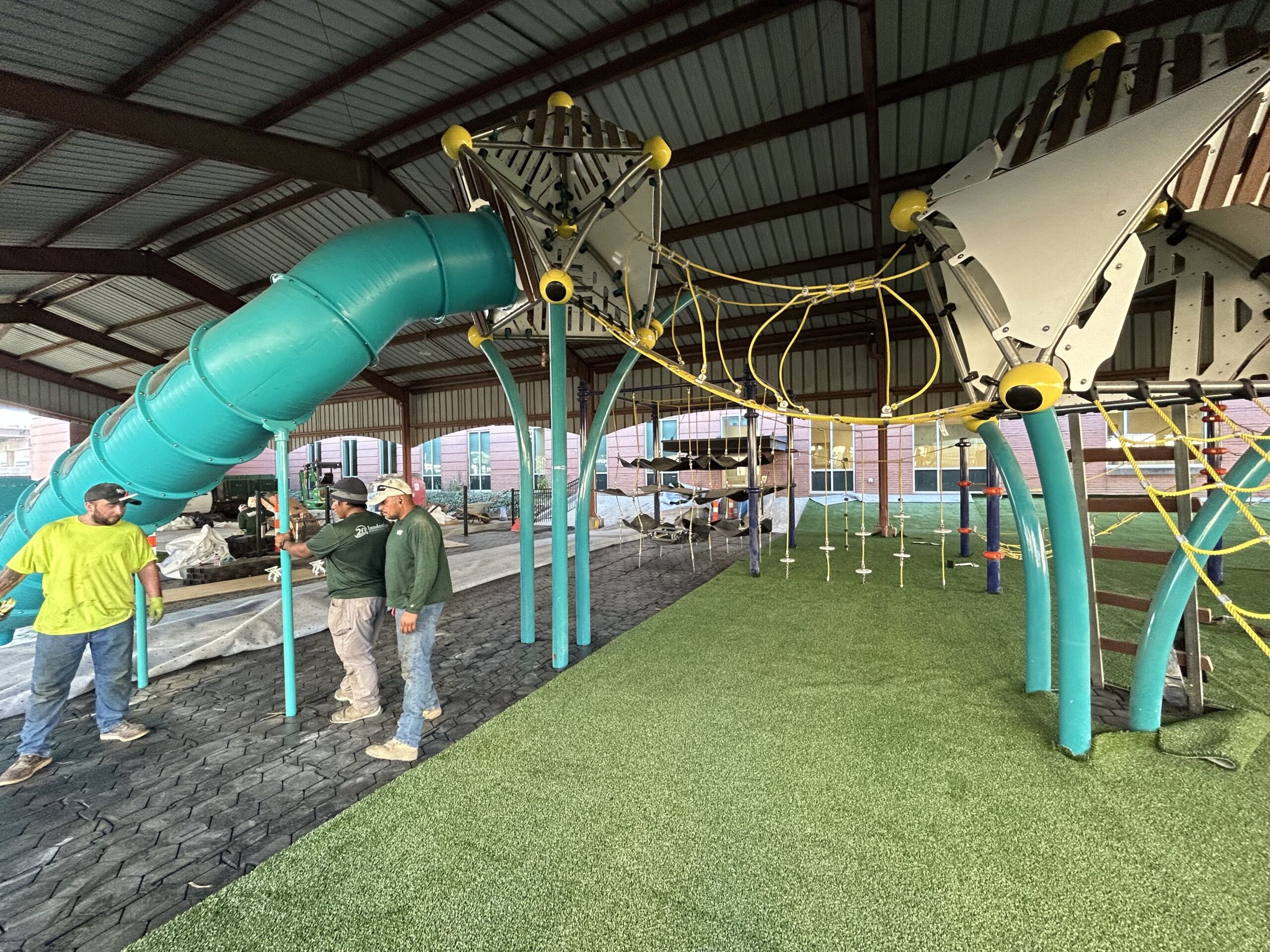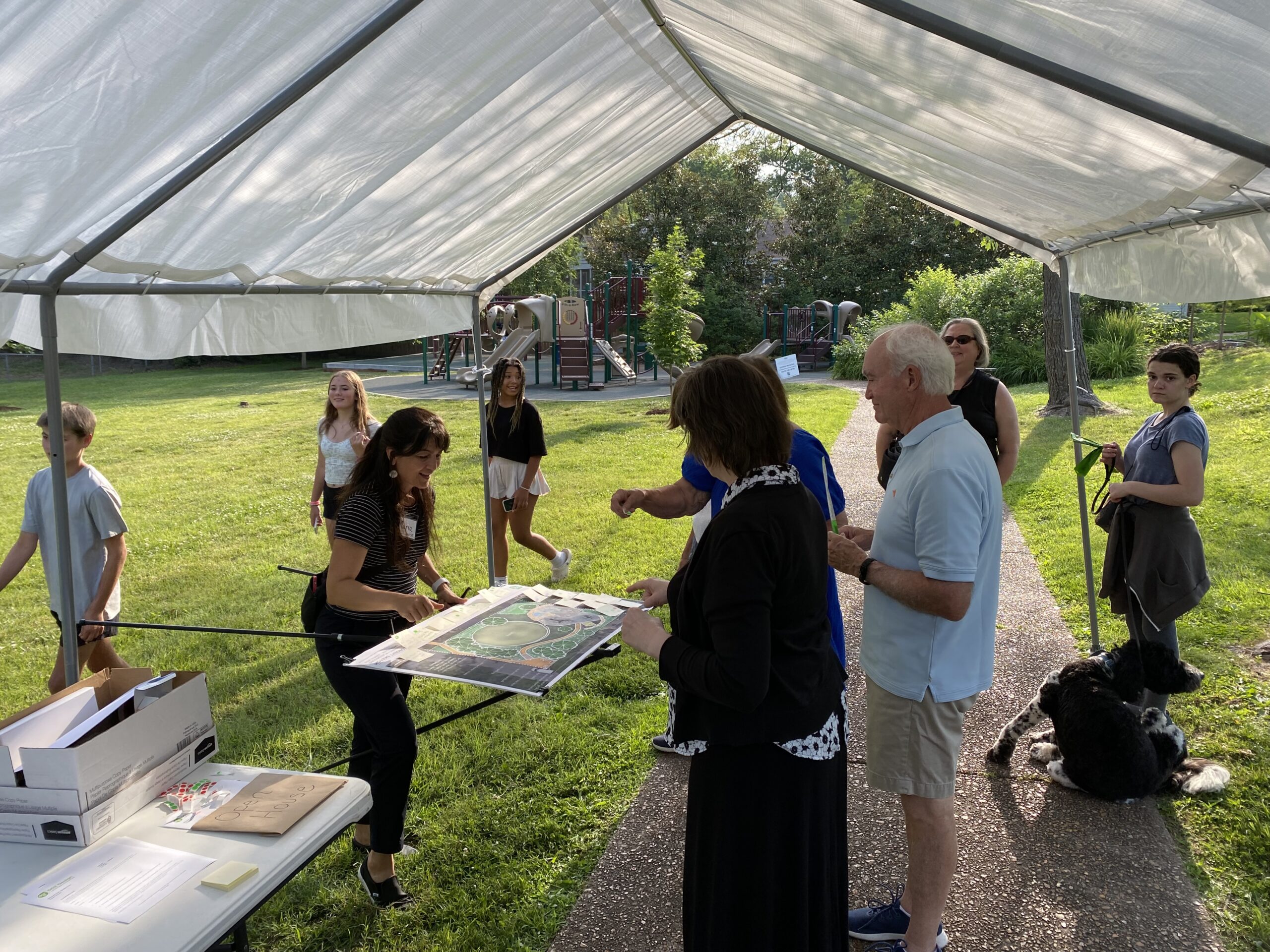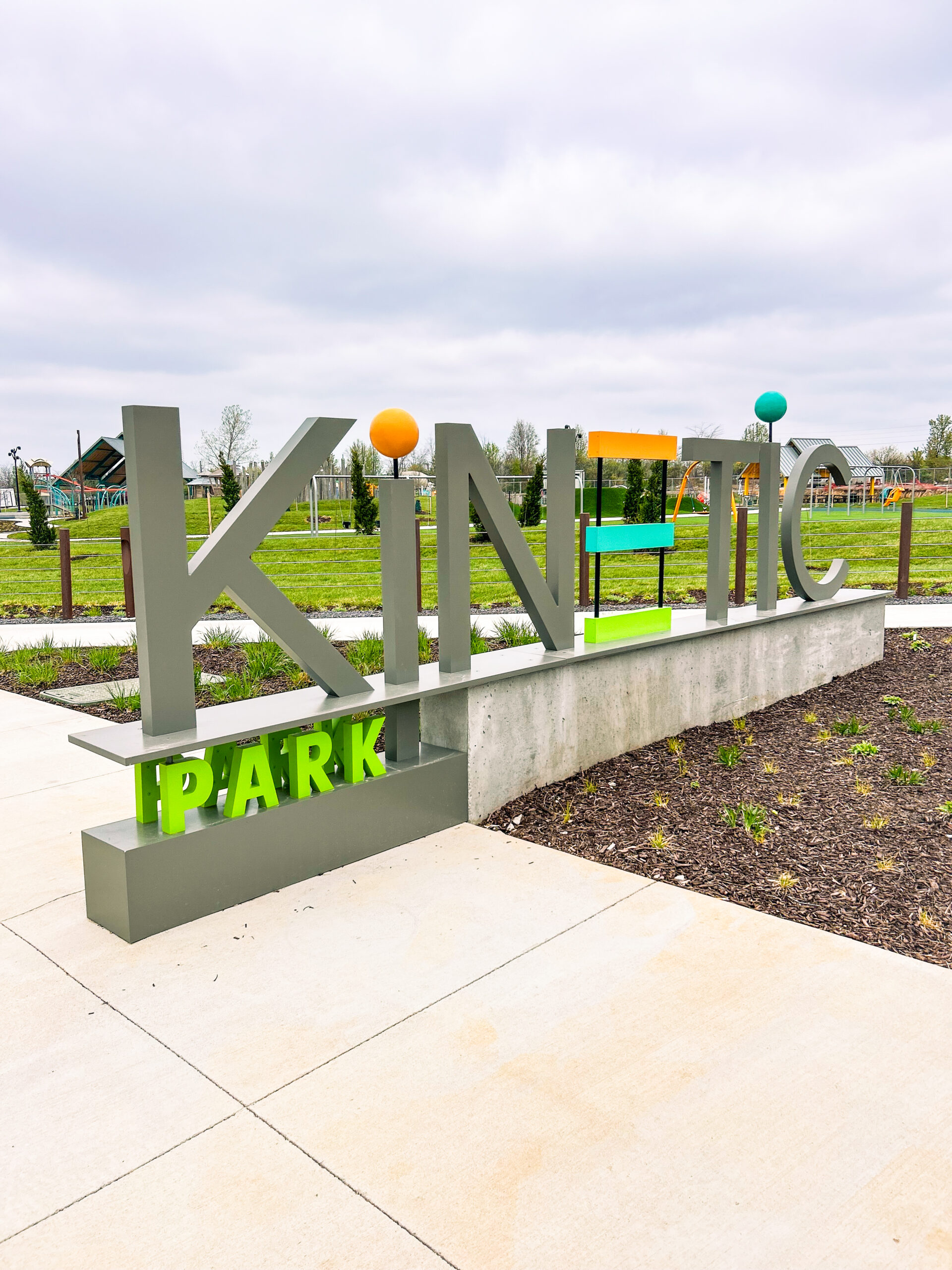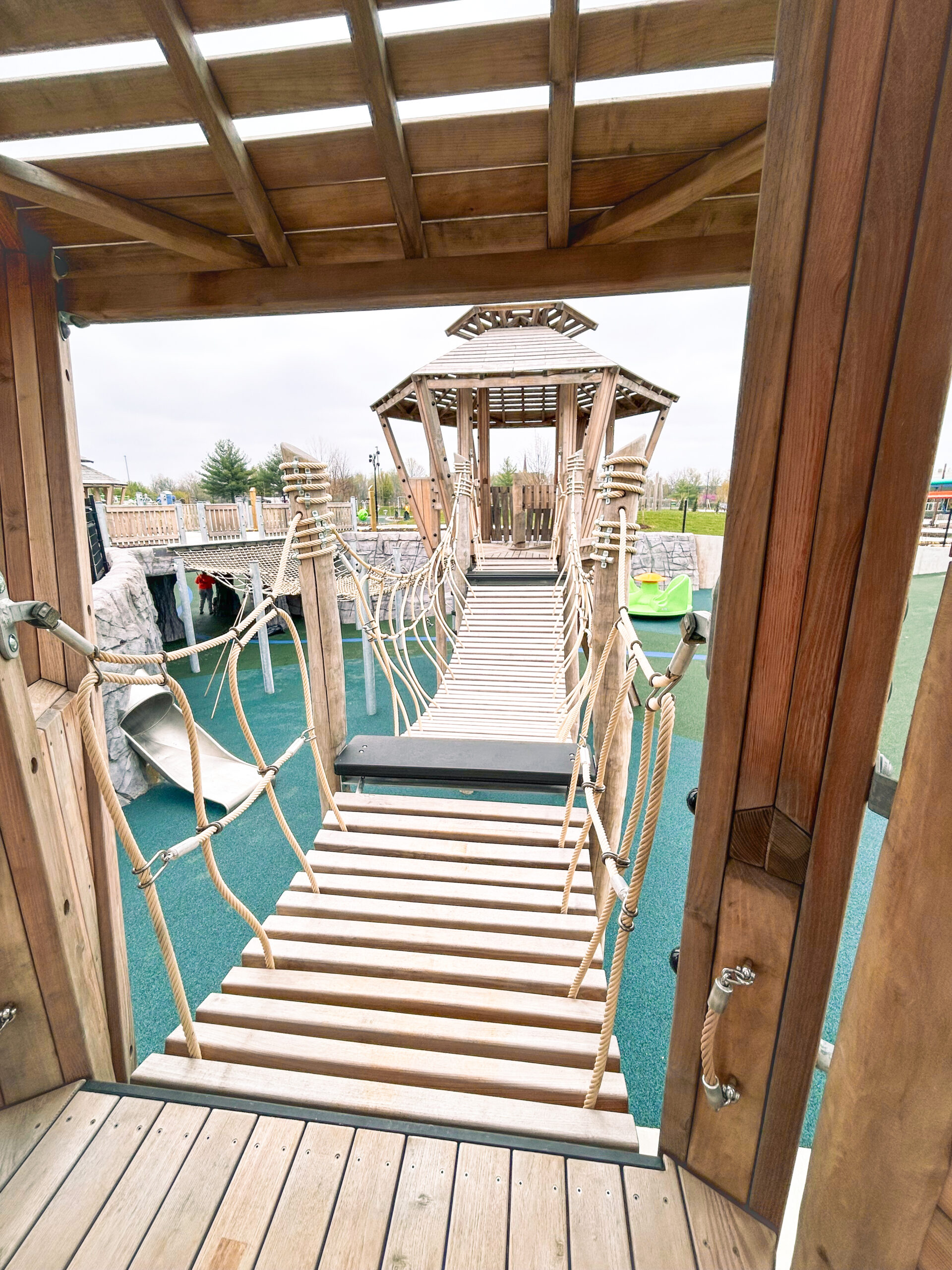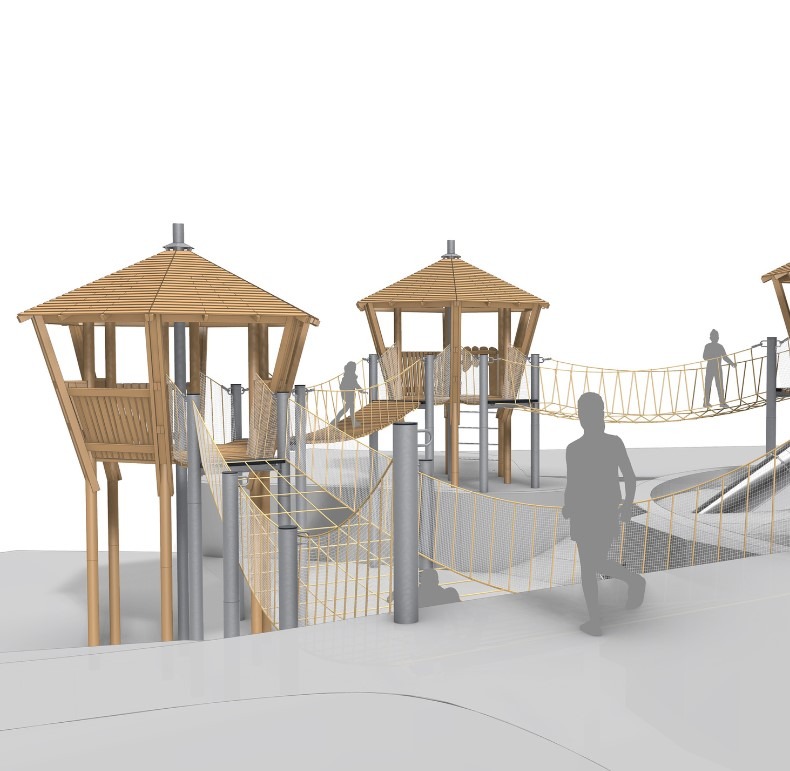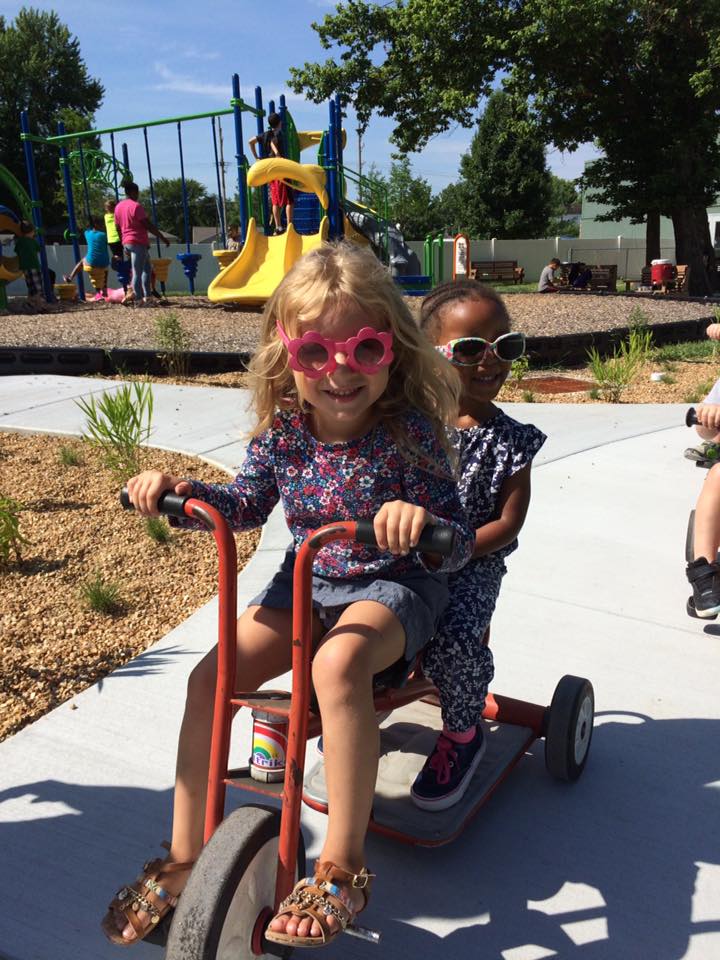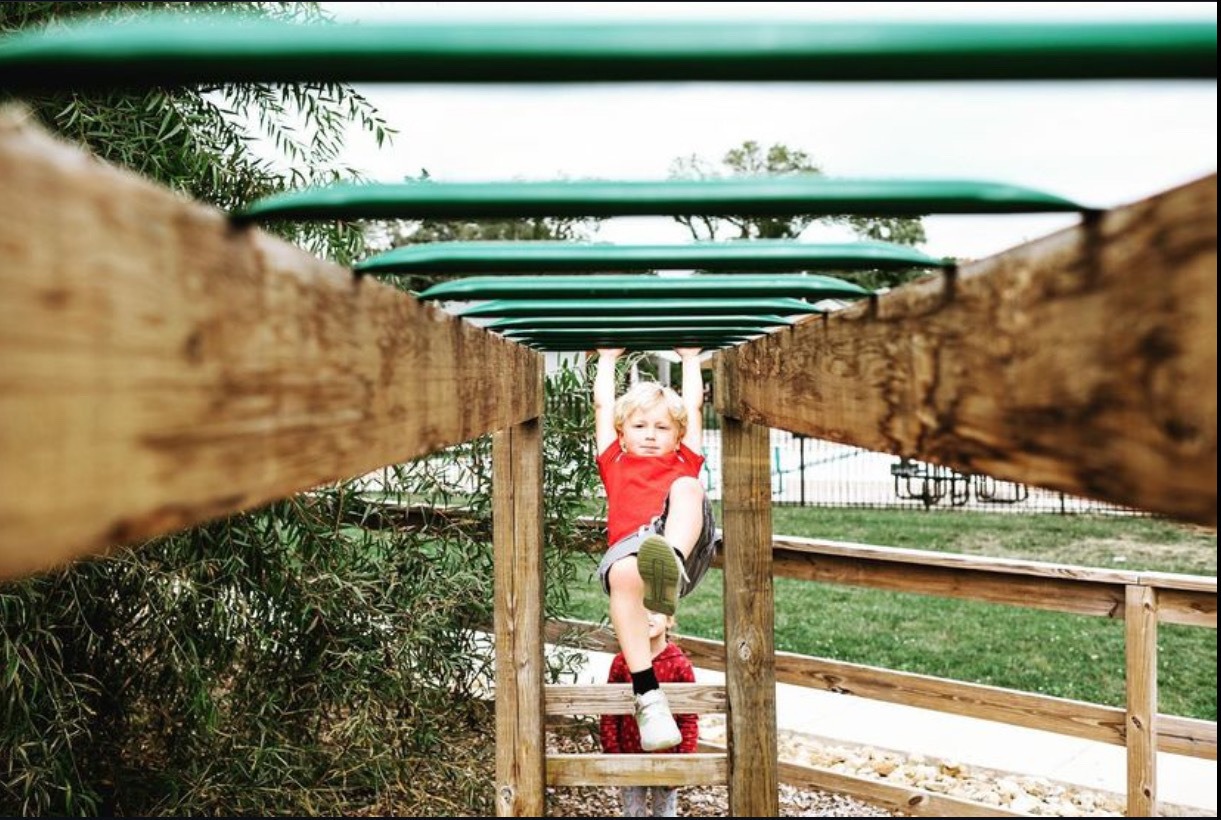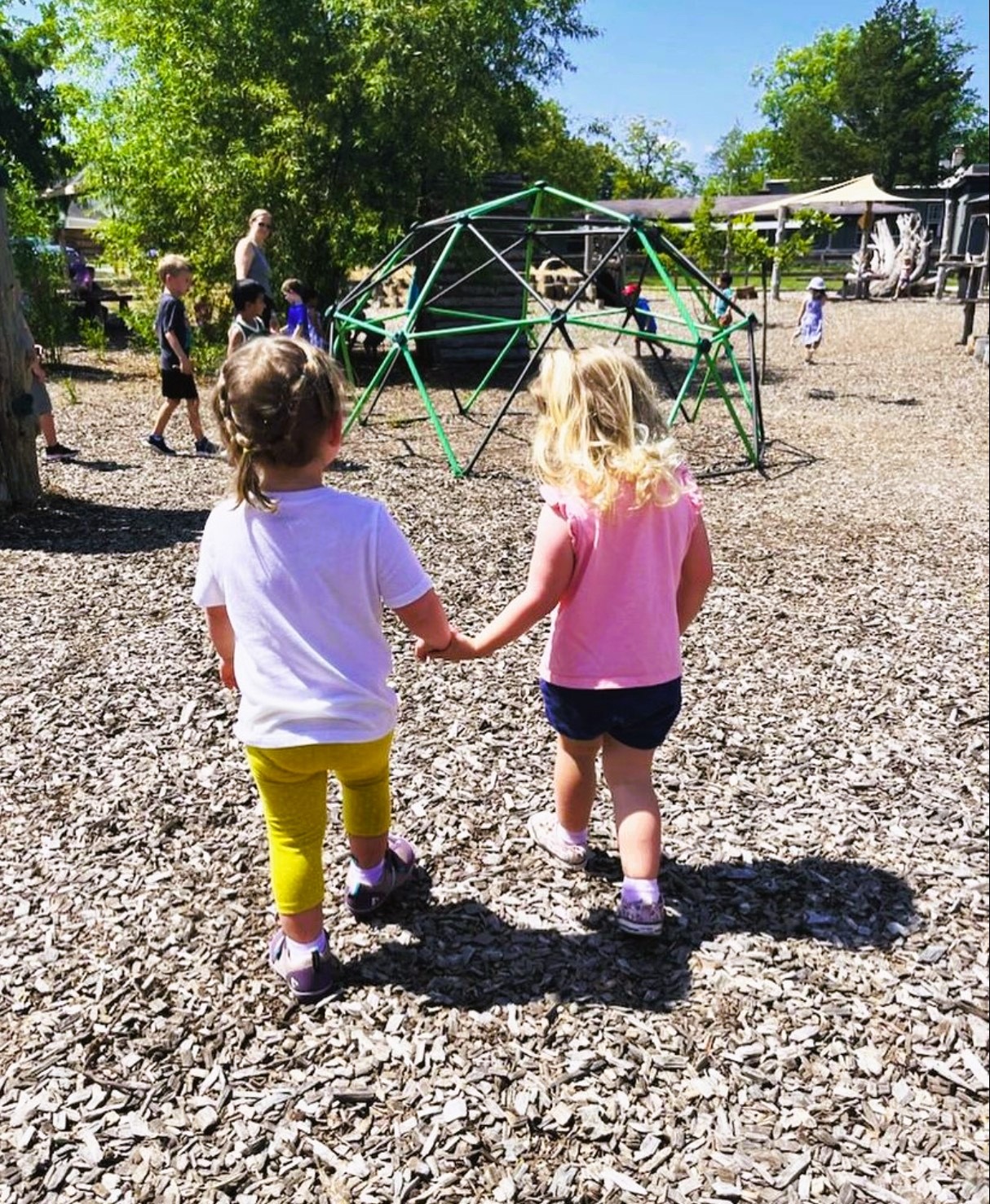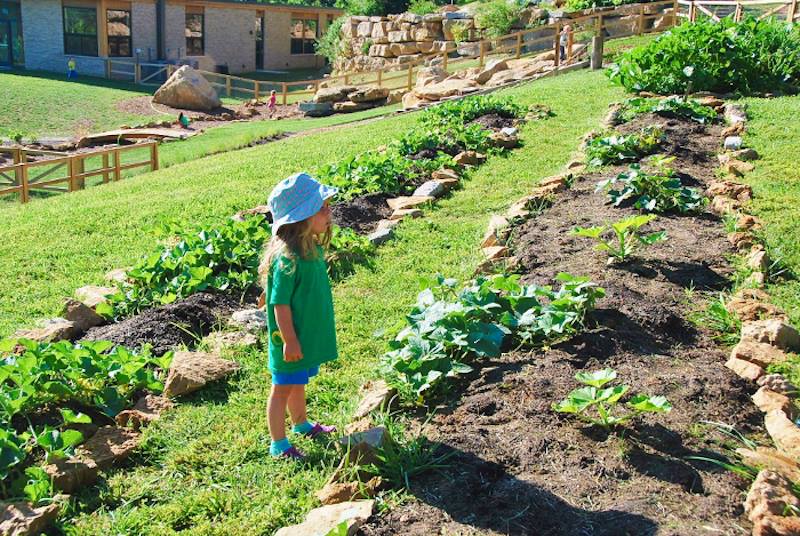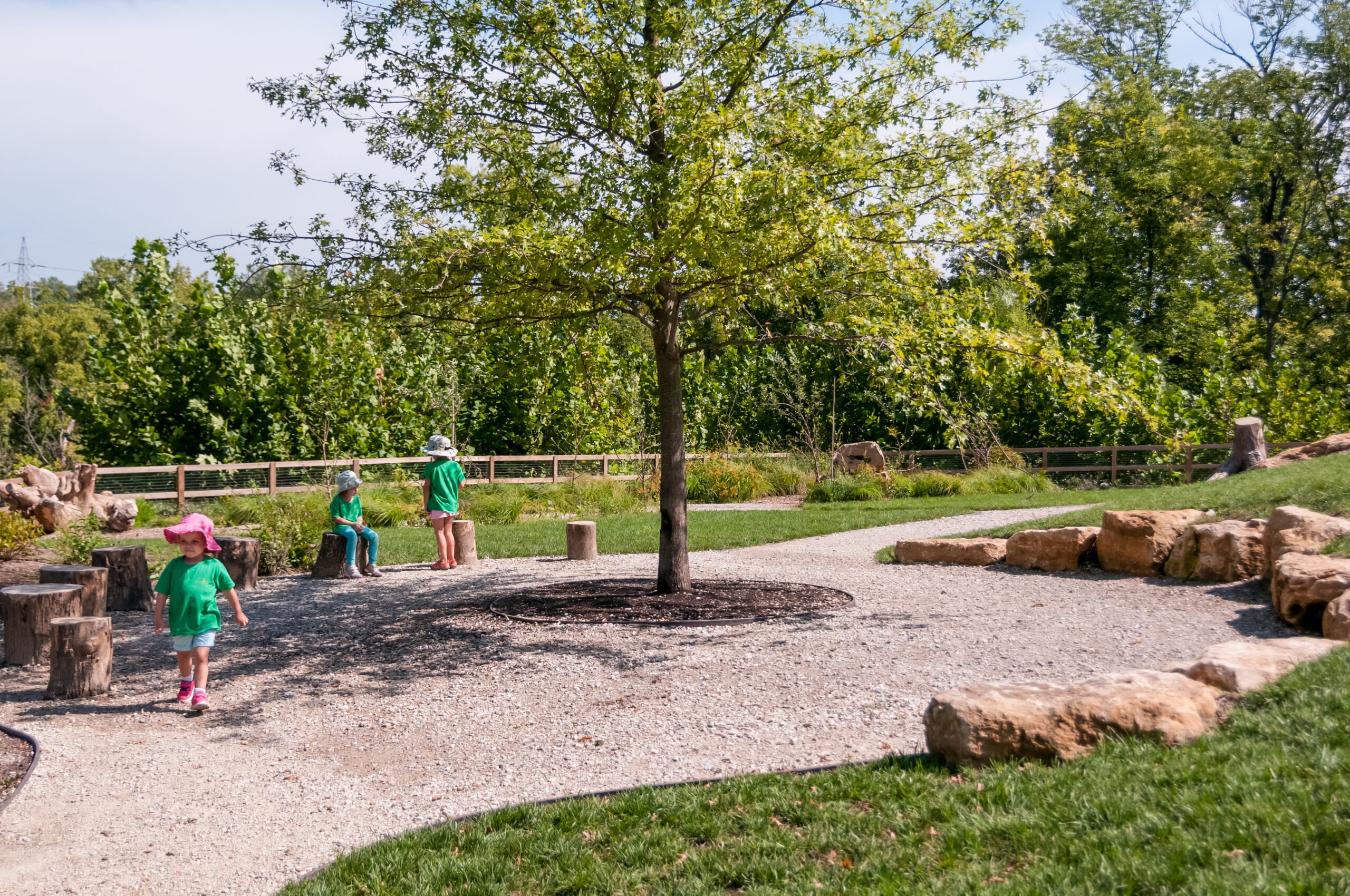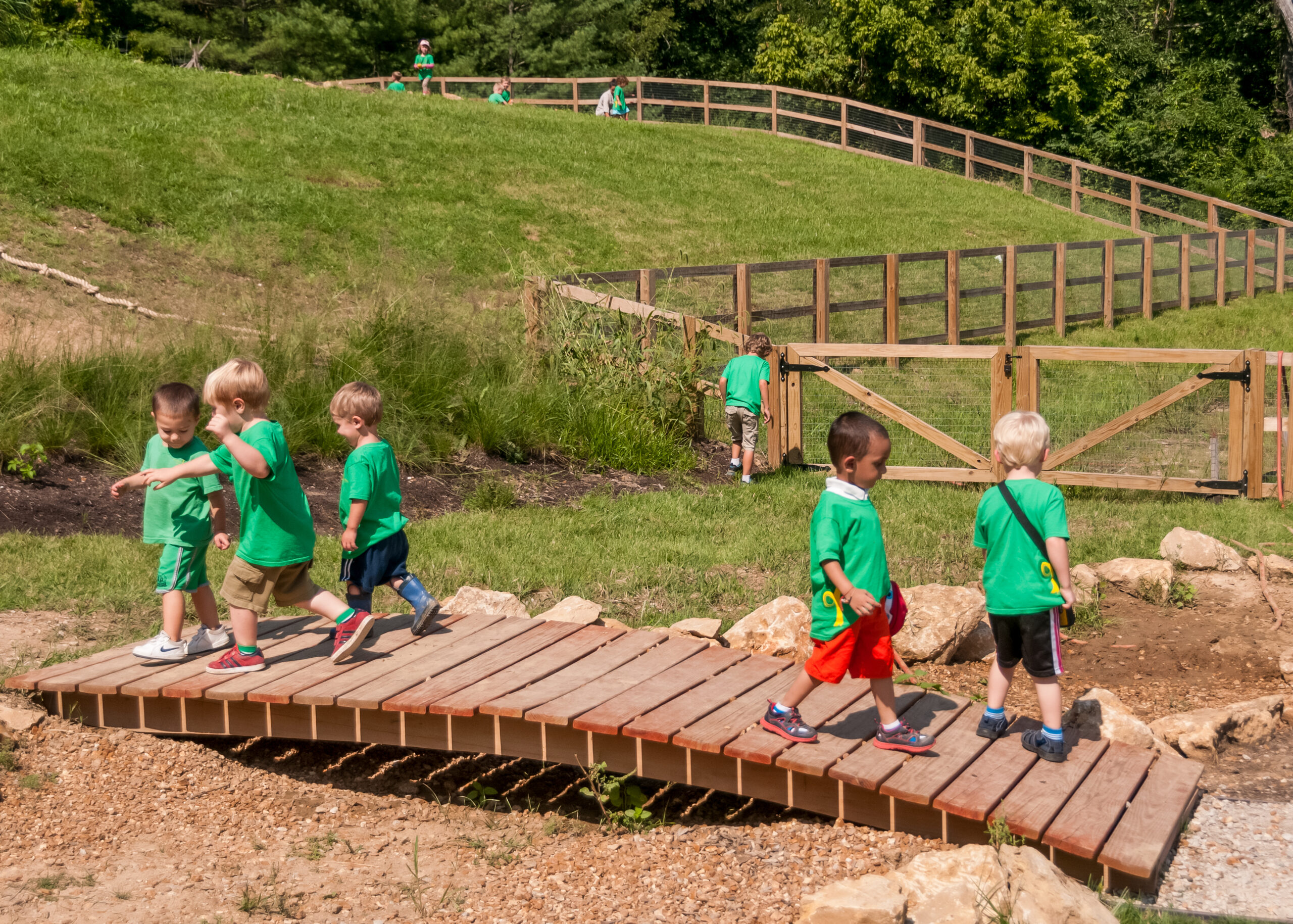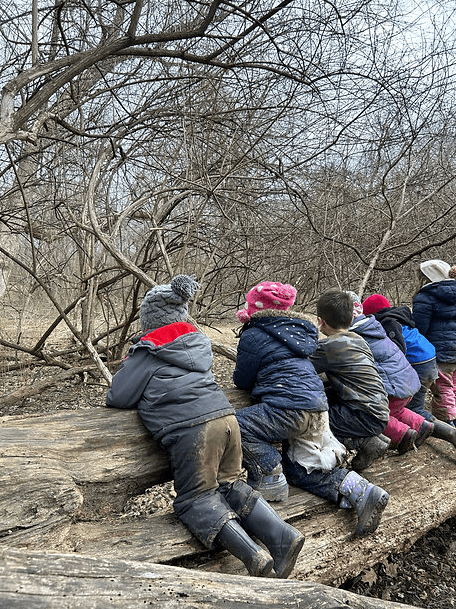Hudson Elementary Playground
DG2 Design collaborated with Hudson Elementary, part of the Webster School District, to create a comprehensive playground Master Plan. Together, they successfully secured a municipal park grant and constructed a wheelchair-accessible, universally designed playground. This new play area replaces the outdated and inaccessible equipment with vibrant, inclusive features designed for children of all abilities.
Highlights include at-grade and elevated play elements, sign language panels, disc swings, a large multi-person spinner, and a variety of new swings. These are installed on a mix of resilient poured-in-place safety surfaces and engineered wood fiber for accessibility. A concrete seat wall borders one side of the playground, offering comfortable seating for rest and observation.
The design encourages imagination, physical challenges, and unstructured play, creating an engaging and welcoming space for all children.
Client Feedback: “All the kids, even the bigger ones, love playing on it, which is nice!” – Lisa Hilpert, Principal, Hudson Elementary.

